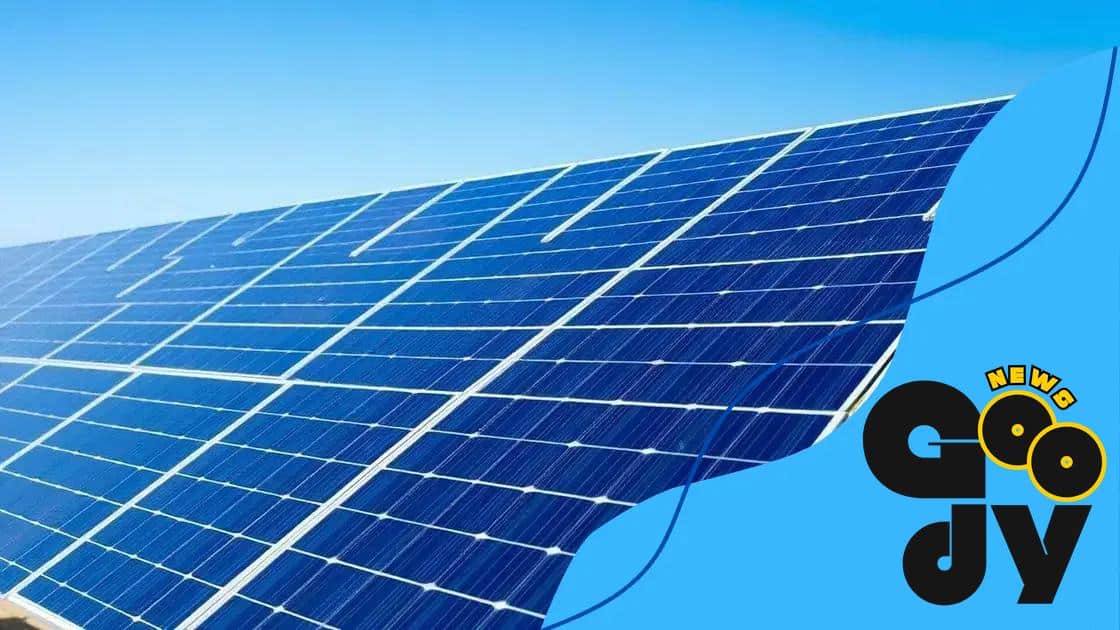Renewable energy public incentives: are you taking advantage?

Renewable energy public incentives significantly lower installation costs and monthly energy bills, making renewable energy sources more accessible and promoting sustainable choices for individuals and businesses.
Renewable energy public incentives are here to help you cut costs while promoting a sustainable future. Have you ever thought about how these incentives could benefit your household or business? Let’s dive in and explore what’s available!
Understanding renewable energy incentives
Understanding renewable energy incentives is essential for anyone interested in reducing their energy costs while benefiting the environment. These incentives can come in various forms and are designed to make the switch to clean energy more appealing.
Types of Renewable Energy Incentives
There are several types of incentives available to homeowners and businesses. Knowing what is out there can help you make an informed decision.
- Tax credits: These can significantly lower your federal or state tax bill based on your renewable energy investments.
- Rebates: Often provided by local governments or utilities, these can give you cash back for installations of solar or wind energy systems.
- Grants: Some organizations offer funding for specific renewable energy projects, helping to cover installation costs.
- Net metering: This allows you to get credit for excess energy you generate, reducing your energy bills.
Each of these incentives can boost your savings and encourage a shift to sustainable energy sources. For instance, tax credits decrease the upfront costs, making solar panels a more feasible option for many families.
How to Access These Incentives
Accessing renewable energy incentives can be easier than you think. Start by researching local programs available in your area. Websites of local governments or energy companies often provide valuable information on available incentives.
- Check eligibility requirements: Some programs have specific criteria that you need to meet.
- Gather necessary documents: You’ll likely need proof of purchase and installation.
- Apply on time: Be mindful of application deadlines for rebates and credits.
In addition, reaching out to renewable energy companies can provide insights into incentives they assist you with during installation. Engaging with local organizations that focus on clean energy can also provide guidance and support.
Remember, the world of renewable energy incentives is constantly evolving. Staying updated on new programs can help you maximize your benefits. By taking advantage of these offers, you can invest in sustainable energy while saving money on your utility bills.
Types of public incentives available
The types of public incentives available for renewable energy can greatly vary, providing multiple options for both homeowners and businesses. Understanding these incentives is crucial for maximizing your savings when investing in renewable energy solutions.
Common Types of Incentives
Several common incentives have been established to encourage the adoption of renewable energy. These include:
- Federal tax credits: These credits reduce your federal taxes based on your renewable energy system installation.
- State tax incentives: Different states offer various tax benefits, which can enhance your overall savings on renewable energy projects.
- Rebates: Some local and state programs provide rebates that give you money back after installing renewable energy systems.
- Grants: Available from governmental or non-profit organizations, these funds can help cover installation costs.
By utilizing these programs, individuals can significantly lower their initial investment costs. For example, receiving a rebate after the installation can make solar panels much more affordable in the long run.
Considerations for Applying
When seeking these incentives, it’s vital to check specific eligibility requirements. Make sure to read through the guidelines so you can efficiently navigate the application process. Additionally, keep track of application deadlines and ensure you have the necessary documentation.
Accessing these public incentives can make a significant impact on your financial investment in renewable energy. Engaging with local energy providers may also provide insights about additional programs that could be beneficial.
Staying informed about available incentives allows individuals to maximize savings while contributing to a greener future.
How to apply for renewable energy incentives

Learning how to apply for renewable energy incentives is a crucial step in making sustainable energy choices. The process may seem daunting, but breaking it down into clear steps makes it manageable.
Step-by-Step Application Process
To get started, you should follow these simple steps to ensure your application goes smoothly:
- Research available incentives: Gather information on the incentives provided by state and local governments. This will help you understand what you can apply for.
- Check eligibility requirements: Different incentives have varying prerequisites. Make sure you meet these before applying.
- Gather necessary documentation: Collect all required documents such as proof of purchase, installation receipts, and energy efficiency audits.
- Complete application forms: Fill out the application forms carefully, providing accurate information to avoid delays.
Filling out applications is crucial, so pay attention to each detail. Missing information can lead to delays or rejections.
Working with Local Programs
Engaging with local energy programs can provide valuable assistance. These organizations often have resources to help guide you through the application process.
Many times, they offer workshops or one-on-one consultations to address questions about renewable energy incentives. This can be particularly helpful if you are navigating this process for the first time.
In addition, contacting renewable energy companies may also streamline the application. They often have experience and can help you gather the necessary paperwork.
Finally, remember to stay on top of deadlines for applications to maximize your chance of securing these valuable incentives. Each step you complete gets you closer to making use of sustainable energy and saving money.
The impact of incentives on your energy bills
The impact of incentives on your energy bills can be significant. By taking advantage of available programs, many homeowners and businesses can reduce their monthly expenses related to energy.
How Incentives Lower Costs
Incentives help offset the initial costs of installing renewable energy systems. When these systems are more affordable, it becomes easier for individuals to invest in them.
- Direct savings: With rebates and tax credits, the upfront investment in solar panels or wind turbines decreases, leading to immediate savings.
- Lower monthly bills: By generating your own energy, you can lower your reliance on traditional electricity sources. This often translates to reduced monthly utility bills.
- Long-term savings: Over time, the combination of lower installation costs and reduced energy bills can save thousands.
As utilities adjust their rates, many people find that renewable energy systems provide a buffer against rising costs. This is especially true for individuals relying on fixed income or those who prioritize long-term savings.
Real-Life Examples
For example, a homeowner who installs solar panels may see their energy bill drop significantly. In some cases, people even move to a net-zero energy situation.
Studies have shown that communities embracing renewable energy incentives experience overall lower energy costs. As more people adopt these solutions, it can lead to a decrease in demand for traditional energy sources, lowering costs for everyone.
Therefore, understanding the impact of incentives can empower individuals to make informed decisions. By leveraging such programs, you not only benefit your wallet but also contribute to a more sustainable future.
Future trends in renewable energy incentives
Future trends in renewable energy incentives are shaping the energy landscape. These trends focus on making green energy sources more accessible and affordable for everyone.
Innovations in Incentive Programs
New technologies are driving the evolution of incentive programs. This means more opportunities for individuals and businesses to invest in renewable energy.
- Smart technology integration: The use of smart meters and energy management systems helps optimize energy consumption, which can qualify for additional incentives.
- Community solar programs: These initiatives allow homeowners to share solar resources, making it easier for those who cannot install panels on their property to benefit from renewable energy.
- Increased funding: Government and private sectors are recognizing the importance of transitioning to renewable energy and are allocating more funds for incentives.
As awareness of climate change grows, public support for renewable energy expands. This support often leads to new or improved incentives to encourage adoption.
Emerging Types of Incentives
In the coming years, we may see more creative incentive options. This could include:
- Carbon credits: Individuals and businesses could earn credits for reducing carbon emissions, which can then be sold or traded.
- Flexible financing options: Enhanced financing models may emerge to support large-scale renewable energy projects with lighter upfront costs.
- Enhanced tax deductions: More substantial deductions for renewable energy investments could be introduced, allowing greater financial benefits.
By staying informed about these trends, individuals and businesses can better position themselves for future savings. Understanding the evolving landscape of renewable energy incentives allows for smarter financial decisions and a greater contribution to a sustainable future.
FAQ – Frequently Asked Questions about Renewable Energy Incentives
What are renewable energy incentives?
Renewable energy incentives are programs and policies designed to encourage the adoption of renewable energy sources, making them more affordable for individuals and businesses.
How can I benefit from these incentives?
You can benefit from reduced upfront costs, lower monthly energy bills, and potential tax credits or rebates when you invest in renewable energy systems.
Are there different types of incentives available?
Yes, various incentives include tax credits, rebates, grants, and net metering, each aimed at promoting renewable energy adoption.
How can I apply for renewable energy incentives?
To apply, you should research available programs, check eligibility requirements, gather necessary documentation, and fill out the appropriate application forms.





